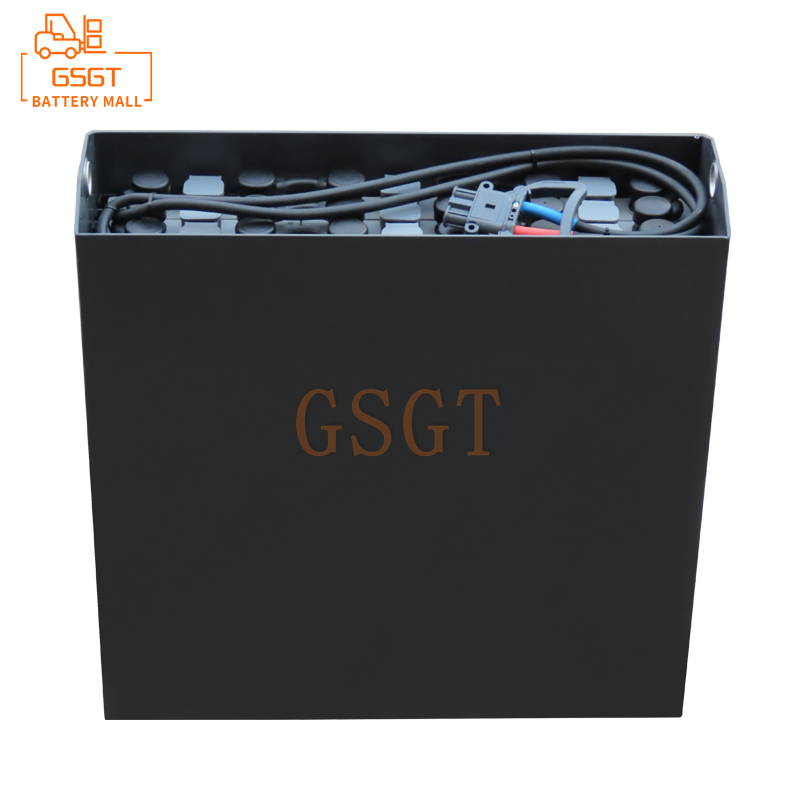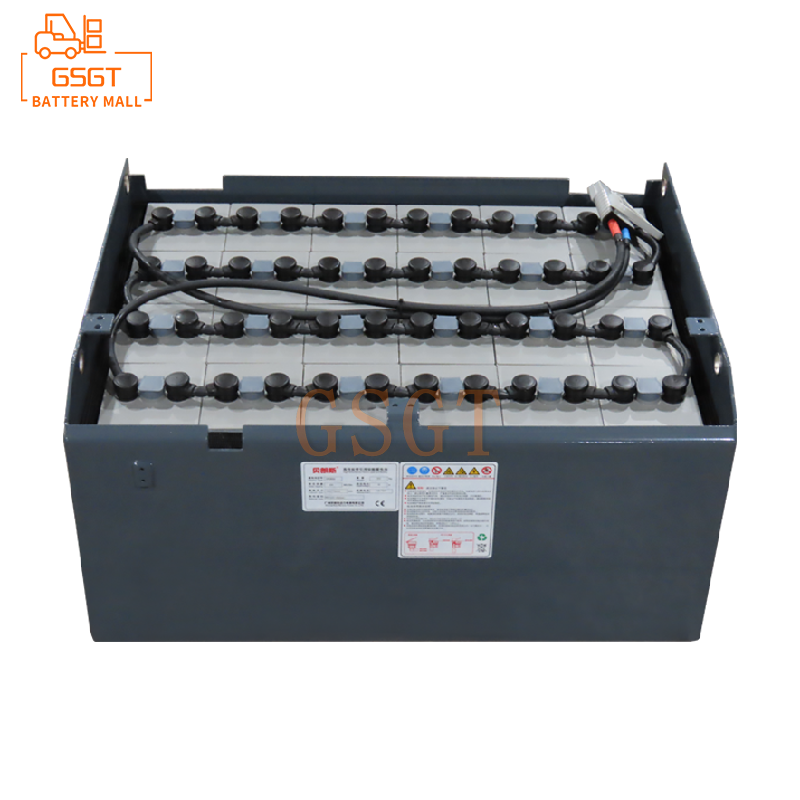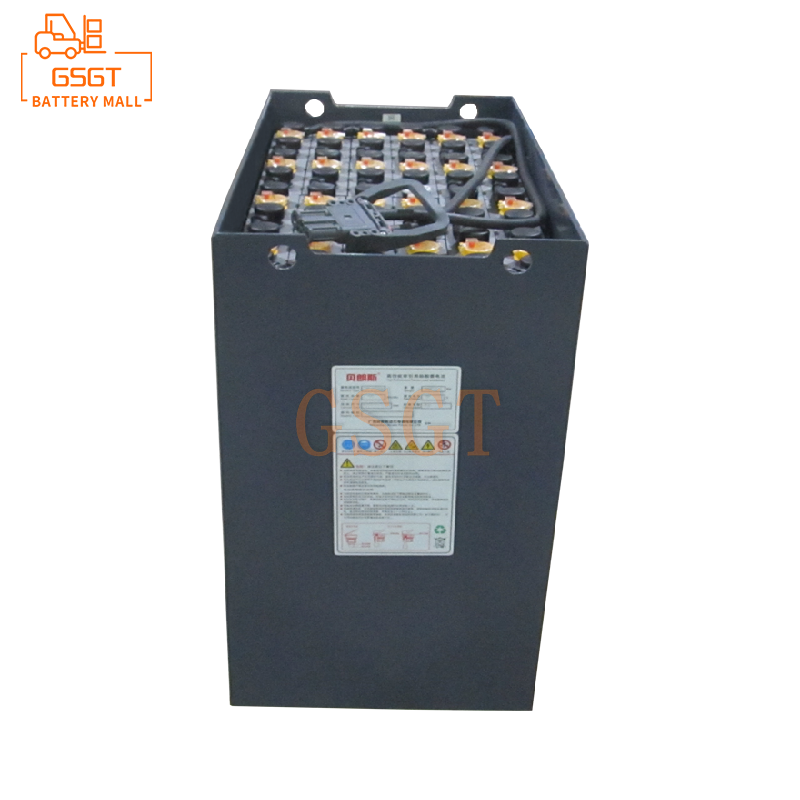Time:2025-07-18 09:38:02
Browse:617
The good condition of lead-acid batteries used in forklifts is directly related to the working efficiency and service life of the forklifts. To do a good job in maintenance, three key indicators need to be focused on. This article provides a detailed account of the normal ranges, inspection methods and maintenance points of the three key indicators: voltage, electrolyte, battery appearance and connection points. At the same time, it answers common questions such as charging precautions, battery replacement judgment and long-term idle maintenance, offering comprehensive guidance for the effective maintenance of lead-acid batteries in forklifts.
Voltage index
Voltage is an important and intuitive indicator reflecting the state of lead-acid batteries. Batteries with different rated voltages have different charging voltages. For instance, the charging voltage of a 24-volt battery is typically between 27.4 and 29.6 volts, while that of a 36-volt battery ranges from 41.1 to 44.4 volts.
In daily maintenance, we can regularly measure the battery voltage through a professional voltmeter. If the battery voltage is found to be significantly lower than the normal range, it may indicate that there is a problem with the battery, such as internal short circuit or sulfation of the plates, and further investigation is needed.
Electrolyte index
The electrolyte is crucial for the normal operation of lead-acid batteries. It not only participates in the chemical reactions of the battery but also plays a role in conducting ions. The first issue is the electrolyte level. If the level is too low, the plates will be partially exposed to the air, accelerating sulfation of the plates and affecting the battery's capacity and lifespan. It is generally recommended to check the electrolyte level once a week. When the level is lower than the standard mark, distilled water should be added. It should be noted that only distilled water can be added. Ordinary tap water or water containing impurities must not be added, as impurities in tap water may react with the electrolyte and damage the battery.
Secondly, there is the density of the electrolyte. Under fully charged conditions, the density of the electrolyte is generally 1.28. The charging state of the battery can be roughly determined by measuring the density of the electrolyte. If the density of the electrolyte significantly deviates from the normal range, it may be due to insufficient or overcharging of the battery, or other impurities mixed in the electrolyte. At this time, the battery needs to be treated accordingly.
Battery appearance and connection part indicators
Keeping the battery's appearance clean and dry is an important part of maintenance. If there is oil or dust accumulation on the surface of the battery, it may cause the battery to leak electricity. The residual acid on the battery surface will corrode the battery casing and shorten the battery life. Therefore, the surface of the battery should be wiped regularly with a clean cloth or sponge. If acid overflows, it should be neutralized promptly with sodium bicarbonate solution (commonly known as baking soda water) and then cleaned thoroughly.
It is also important not to overlook whether the battery connection parts are firm and free from corrosion. Loose connection parts can lead to an increase in contact resistance, causing the battery to heat up during charging and discharging, affecting battery performance, and even possibly causing a fire. If corrosion is found at the connection points, the corrosive substances can be gently brushed off with a metal brush, and an appropriate amount of vaseline or special anti-corrosion grease can be applied to prevent further corrosion.
Frequently Asked Questions about the Maintenance of Lead-acid Batteries for Forklifts
Question 1: What should be noted when charging lead-acid batteries for forklifts?
When charging, make sure to use a charger that matches the battery specifications. It is generally recommended to charge at the end of each eight-hour work shift or when the battery is discharged by more than 30%. Avoid over-discharging, as continuing to discharge when the battery power is below 80% May cause irreversible damage to the battery. At the same time, attention should be paid to the charging environment temperature. The suitable charging temperature range for lead-acid batteries is generally between 60°F and 110°F (approximately 15.6°C to 43.3°C). If the battery temperature is too high or too low, it should be waited for to return to an appropriate temperature before charging. In addition, during the charging process, closely monitor the battery's condition, such as whether there is any abnormal heating or boiling of the electrolyte. If any abnormality is found, stop charging immediately and check the cause.
Question 2: How to determine whether the lead-acid battery of a forklift needs to be replaced?
When the battery shows the following conditions, it may be necessary to consider replacing it: First, the battery capacity drops significantly. For instance, after being fully charged, the working time of the forklift is greatly shortened and cannot meet the normal working requirements. Second, the internal resistance of the battery has significantly increased, which will lead to difficulties in charging, longer charging time and severe battery heating. The third issue is severe sulfation of the battery plates, which is manifested as the appearance of a large number of white crystals on the plates. Even through conventional charging maintenance measures, the battery performance cannot be improved. The fourth is that the battery casing undergoes severe deformation, cracking or frequent leakage of the electrolyte, etc. When making actual judgments, it is recommended to conduct a comprehensive assessment by taking into account the battery's service life, the number of charge and discharge cycles, as well as the various symptoms mentioned above.
Question 3: How should lead-acid batteries of forklifts that have not been used for a long time be maintained?
If the lead-acid battery of a forklift needs to be idle for a long time, it is necessary to fully charge the battery first to ensure it is in a fully charged state. Then, perform a supplementary charge on the battery every month to prevent self-discharge and excessive discharge damage. During the idle period, the battery should be stored in a dry, well-ventilated and cool place, avoiding direct sunlight and high-temperature environments. At the same time, regularly inspect the appearance and connection points of the battery to ensure that the battery surface is clean and the connection is firm. Deal with any abnormalities in a timely manner. In addition, for batteries that have not been used for a long time or have been in normal use for 2 to 3 months, a balanced charging is also required to ensure that the voltage and capacity of each cell of the battery are balanced and consistent, thereby extending the battery's service life.

$1690

$1200

$2610

$2450

MESSAGE
Professional And Efficient
Security
Affordable Price
Professional Services